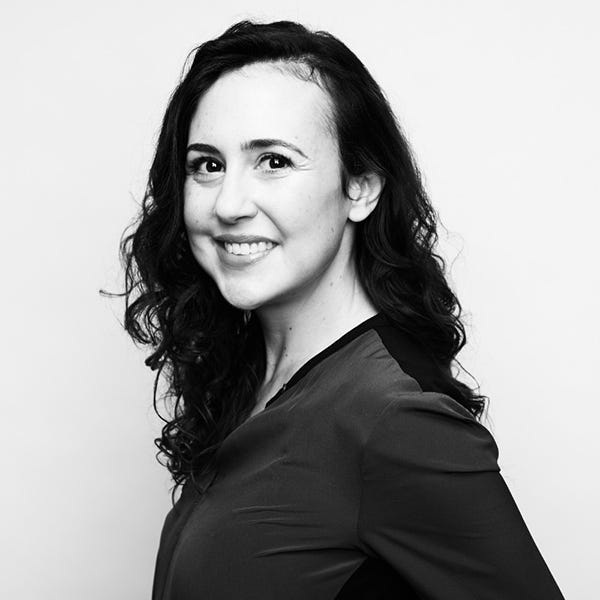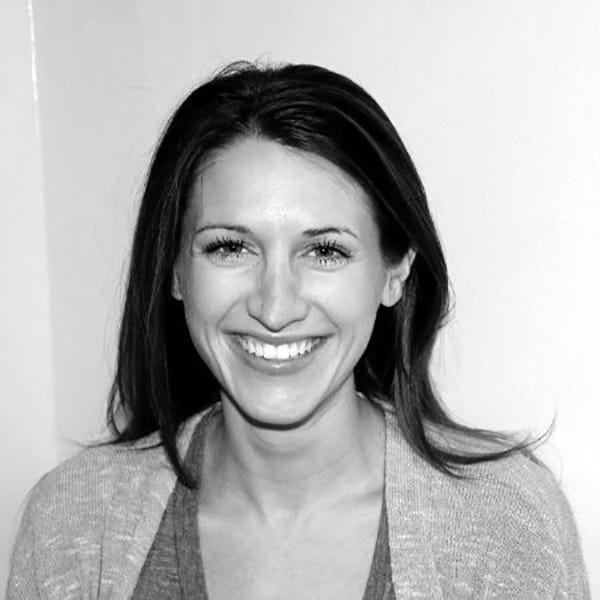2019
Balanced data for a bias-free society
We talk to Laura McGorman from Data for Good at Facebook and Rebecca Furst-Nichols from Data2X about the importance of sex-disaggregated data in advancing the gender balance agenda, particularly as it pertains to women entrepreneurs.
By Laura McGorman, Facebook and Rebecca Furst-Nichols, Data2X
An often-overlooked facet in the gender bias dialogue is the availability, collection and use of sex-disaggregated data. In order for women and entrepreneurs to be well represented in business and society, they need to be well represented in the numbers that guide decision makers first.
In this blog post, we talk to Laura McGorman from Data for Good at Facebook and Rebecca Furst-Nichols from Data2X about the importance of sex-disaggregated data in advancing the gender balance agenda, particularly as it pertains to women entrepreneurs.
1. Can sex-disaggregated data improve gender balance?
Rebecca: Sex-disaggregated data does improve gender balance, because without adequate information on women, policies are made for everyone based on the experiences of half the world’s population. One reason this happens is that most data from countries is collected at the household level. These surveys ask for the ‘head of the household’, who responds on behalf of everyone else. And the head of the household is most often a man. This assumes that the experience of men and women, boys and girls is equal within the home, something we all know by now is not the case.
In addition to sex-disaggregation, we call out the importance of 'gender data', which includes data focused on issues that are important to women or more accurately represent their roles in society. For example, historically much of the data on women is about their reproductive roles, but their varied economic activities go uncaptured, and thus, are not valued by society or taken into account when a government designs policies. The reason this information is missed is that many surveys ask about a ‘primary’ activity, which may be reported as a housewife if that's a woman's primary identity despite the myriad paid and unpaid roles she also plays.
2. In your work, how have you witnessed the use of sex-disaggregated data being able to make change and drive progress?
Laura: I think the important thing to remember about sex-disaggregated data is that what can't be measured can't be managed, meaning that if we don't have the data to make clear the issues that are disproportionately affecting women, then it's hard to garner support to make change. The Global Partnership for Sustainable Development Data says this means we need disaggregation for all development data by gender, and I think they're right.
To provide an example of how this kind of information makes a difference, we found in the Future of Business Survey, a global collaboration with the World Bank and OECD to survey small businesses on Facebook, that women-owned small business owners were less likely than men to say that they had accessed a bank loan for their business in every region of the world. As a result, Facebook is now partnering with Girls in Tech to provide female entrepreneurs in Australia, Taiwan, Indonesia, Korea and Singapore with the tools and opportunities they need to help secure funding. I think this is just one example of how gender-focused research can lead to better investments and outcomes for women.
Rebecca: One recent example Data2X has profiled is on the case of sex-disaggregated financial inclusion data in Mexico. Mexico has relatively strong data on financial inclusion for men and women. Among many other findings, this data shows that while women make up the majority of account holders (81%) at national development banks (those that serve social program beneficiaries), they are underserved by commercial banks in many states. This information has made a clear business case for targeting women as clients for financial products such as credit, savings, insurance, and commercial bank accounts – something that Mexico has been working to do with financial inclusion policies that target women. And the gap in access to formal financial products has shrunk over time.
The data also showed that only 33% of women versus 50% of men had retirement savings, leading to a policy response from the Mexican government that included bringing domestic workers, the majority of whom are women, into the formal sector and providing them with access to pension benefits and insurance.
3. What were some of the most surprising research findings about women entrepreneurs from the data you’ve gathered?
Laura: I think what has been surprising, and admittedly a bit depressing, in the work that we've been doing on access to finance, is that the gap in access to bank loans doesn't go away as incomes rise. In other words, although more women business owners in Europe have secured loans for their businesses when compared to women in Africa, the gap between male and female entrepreneurs is persistent, regardless of whether you're talking about a developed or developing nation. Furthermore, even if you control for differences in business age, size, and industry between businesses owned by men versus women, an entrepreneur being a woman still has a negative impact on her likelihood to have accessed a loan. That's a tough pill to swallow on the current state of women-owned businesses and the extent to which they're being funded appropriately.
On the bright side, we've found some encouraging things about women's use of social media as a way to grow their business in spite of the challenges they face. For example, in research performed with Morning Consult and the US Chamber of Commerce, women business owners in the US were more likely to report that Facebook had helped them increase sales. And in the latest Future of Business results, more than 8 in 10 (81%) women-owned small businesses around the world said social media is beneficial to their business, consistently reporting this at higher rates than men. We're proud of this impact and hope that Facebook continues to support the growth of small businesses of all kinds around the world.
4. How can people and organizations access the data that you’ve mentioned above?
Laura: We make our country-level Future of Business survey data open and available to the public and anyone can download the latest results here.
Rebecca: For those wanting to look further into the state of gender data, our Bridging the Gap report (currently covering 15 countries in Africa) is a great place to start. We will soon be following up with country-specific briefs that illustrate gender data availability and gaps by country. We hope this information will provide researchers and policymakers at the national level with a clear view of the gender data that is available across different surveys and sources, and therefore, encourage its use.

ABOUT THE AUTHOR :
LAURA MCGORMAN
Laura McGorman is a Public Policy Manager for Data for Good at Facebook, where she works to make Facebook data products available to nonprofits and research institutions in order to help them achieve their missions. The latest Future of Business features analyzes data from 97 countries, making it one of the largest and most inclusive surveys of small businesses in the world.

ABOUT THE AUTHOR :
REBECCA FURST-NICHOLS
Rebecca Furst-Nichols is Deputy Director of Data2X, a technical and advocacy platform that builds partnerships with data producers and users to tackle gender data gaps on key policy-relevant issues facing women and girls. They work with data producers to address gender bias in traditional statistical systems and to ensure that bias is not introduced in the data systems of the future.